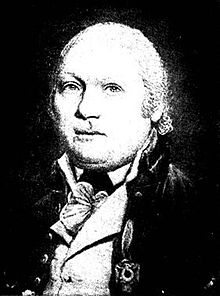German Cincinnati History & Heritage
German History
The Germanic tribes originated from people of the Baltic Sea coast and can be dated as early as 500 BCE.
Near 100 BCE, the tribes congregated in the central and southern parts of the present-day Germany. For
many centuries, the territory was occupied by the Roman and Austrian empires until Germany’s
unification in 1871 after the Franco-Prussian War. It was during this era that the German Enlightenment
marked a shift in the social, political, literary, and philosophical landscape of Germany.
However, following WWI, Germany was once again divided. During the Great Depression of 1929,
Germany saw the rise of the Nazi Party. Adolf Hitler’s notorious legacy remain a shocking historical
blight to this day. After WWII, the German capital city, Berlin, was divided for more than 40 years. In
1989, the Berlin Wall fell and reunification took place shortly after in 1990.
Today, Germany is the center of European commerce and culture. It is geographically centered, and is
the second most populous country in Europe with more than 81 million people. The German economy is
the largest of the European continent and the fifth largest in the world according to the World Factbook.
Known for its precision and quality, Germany is a leading exporter of machinery, vehicles, chemicals, and
household equipment.
Approximately 1/3 of Germans are Protestants and another 1/3 are Roman Catholics. The remain 1/3
are mostly unaffiliated with a very small minority comprised of Muslims, Jewish and other non-
Christians. The official language is German, but a small percentage of German population speaks
Serbian, Frisian, Romani (an indigenous language), Turkish, Kurdish, and Danish.
The German people are industrious and efficient. They can be idiosyncratic and they often place value
on structure and precision. They manage their time well and they thrive on compartmentalizing. The
Germans are very proud, honest, direct, and they rarely admit faults. They are not rude as most often
are thought of them; the Germans have a sense of humor that is more ironic and cynical. They value
tradition and they plan for every contingency.
The Germans love their beer and sausage. There are more than 1500 different types of sausage in
Germany and it is the birth place of many beer varieties including Pilsner, Weizenbier, and Alt. In fact,
the world’s oldest brewery is in Bavaria. The German food is rich and hearty. It is often consisted of
pork, cabbage, beets, turnips, potatoes and sauerkraut. Lunch is traditionally the main meal of the day;
however, that has changed in the modern age. Germans also have a long tradition for noodles such as
Spatzle and dumplings; and of course, the Germans are known for their sweets most notably the
German Chocolate and Black Forest Cake.
Music is important to Germany. Many famous composers are well known to the world: Bach, Mozart,
Beethoven, Brahms, Wagner, Mahler. Germany is known for its artistry in printmaking, woodcuts, and
engraving. There is also a strong presence of architecture including Romanesque, Gothic, Classicist,
baroque, Rococo, and Renaissance.
Germans celebrate many of the traditional Christian holidays including Easter and Christmas.
Additionally, the Germans are known for its Oktoberfest which begins in September of each year. The
tradition supposedly began with the wedding of Crown Prince Ludwig of Bavaria to Princess Therese von
Sachsen-Hildburghausen in 1810.
German immigrants were among the earliest settlers of Ohio.

David Ziegler, first mayor of Cincinnati – a German immigrant and US Military Veteran
Beginning in the 1830s, many Germans began to migrate into Cincinnati. Many lived in the area known as Over-the-Rhine, and that area became an important center for the German immigrant culture. There were German churches, clubs, schools, and even German-language newspapers. The first mayor of Cincinnati was a German immigrant from Heidelberg who had served in the U.S. military—David Ziegler, elected in 1802.
The strong German presence in Cincinnati also caused strife for Cincinnatians. In 1855, a Nativist mob rioted in the German neighborhood. But they were met with armed German militia near Vine street.
The 1950s saw a second wave of German immigrants coming to Cincinnati. Today, nearly half of all Cincinnati population claims some German ancestry. The German-American Citizens League is
headquartered here in Cincinnati. The Tyler Davidson Fountain (located on Fountain Square downtown) was produced in Munich, and Cincinnati boasts the largest Oktoberfest celebration (outside of Munich).
In keeping with the German tradition for their love of beer, Cincinnati is also the home of a number of breweries including Christian Moerlein and Hudephol. There is also a rich history of German food here in Cincinnati including the Mecklenburg Gardens, founded in 1865, and Hofbrauhaus in Newport Kentucky.
The blog is in part of the Mission Continues blog series, written by Jin Kong and therefore all words and thoughts are his own and not a reflection of GCWAC.


